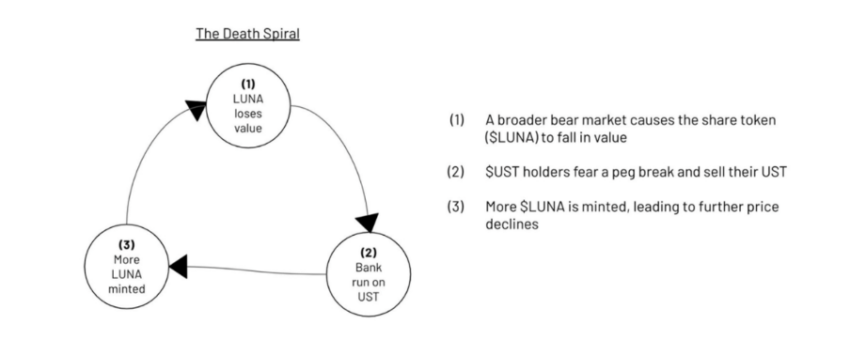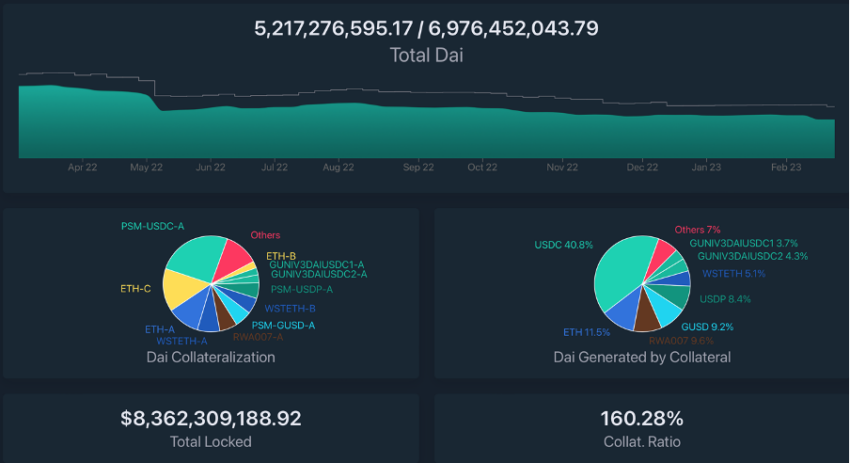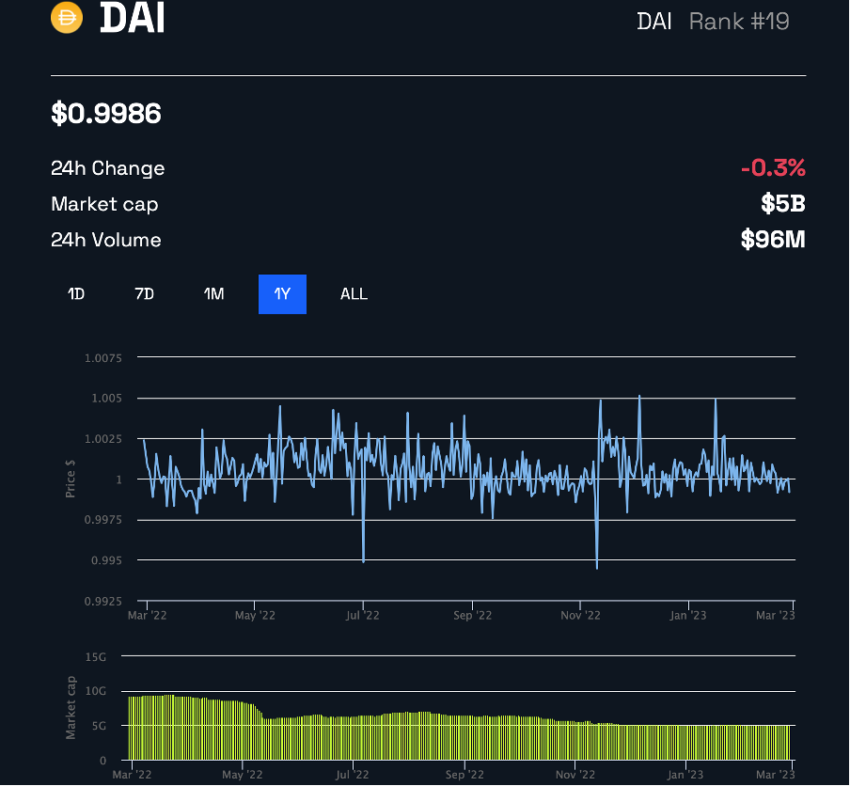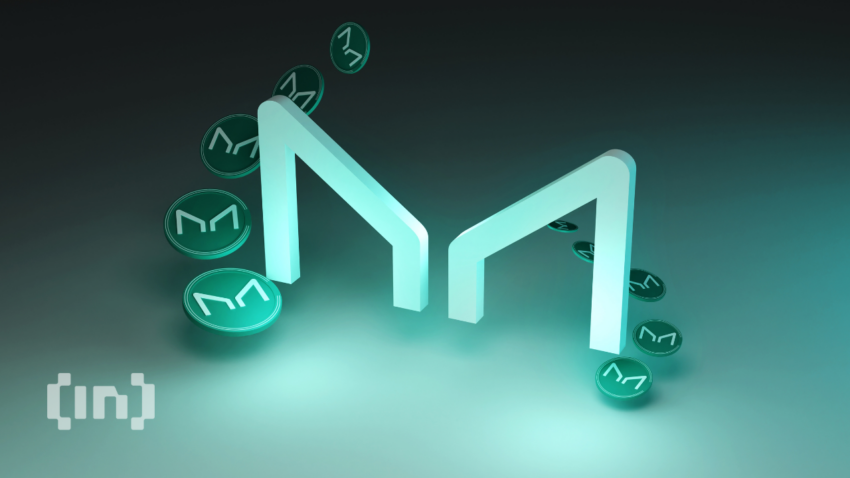Decentralized stablecoin DAI is creating headlines for the wrong reasons following MakerDAO’s Endgame tokenomics. Some even raised concerns by recreating links to Terra ecosystem collapse and UST de-peg event.
Stablecoins, in general, have faced uncertainty from regulators across the globe—especially decentralized stablecoins. If government authorities/regulators were to attack a decentralized stablecoin, it could be for several reasons.
Decentralized stablecoins, like other cryptocurrencies, operate outside the traditional financial system. Regulators may be concerned about their potential impact on the economy or their use in illicit activities such as money laundering or terrorism financing.
Last year, MakerDAO Co-Founder Rune Christensen reiterated a similar scenario after the Tornado Cash sanctions. Per Christensen, it was only a matter of time before government authorities attacked MakerDAO as a decentralized stablecoin. Consequently, he proposed Endgame, a grand restructuring plan to make MakerDAO and DAI more censorship resistant.
Maker Endgame Documentation in 2023
MakerDAO is a decentralized finance (DeFi) platform that operates on the Ethereum blockchain and allows users to create and trade stablecoins backed by collateral in other cryptocurrencies. MakerDAO’s native token (MKR) governs the platform and maintains its stability.
MakerDAO introduced a new feature called “Endgame tokenomics” that aims to stabilize the price of its stablecoin, DAI, and reduce the risk of liquidation. This new system proposes to break the DAO into smaller units called MetaDAOs. Each MetaDAO has unique tokens, each with specific goals, and introduces a 25% limit on centralized assets backing DAI in addition to negative interest rates.

MakerDAO Co-Founder suggests that DAI holders can yield farm the new MetaDAO tokens as an added incentive. Nevertheless, the proposal’s launch came with much censure and faced criticism.
Calling Out This Movement
PaperImperium, a pseudonymous crypto Twitter account dedicated to happenings in decentralized finance, drew attention to a part of the document today. It discloses that users could borrow DAI on their delegated MKR tokens should the proposal pass. MakerDAO risked repeating the mistakes of the last market cycle.
The commentator asserted that in the event of a liquidation spiral, delegated tokens would come back into circulation, tanking the value of MKR. This in turn could expose the protocol to attacks from malicious actors who can easily hijack governance, citing the Mango DAO attack.
This new system attracted comparisons to other DeFi platforms like LUNA and UST. LUNA is the native token of the Terra blockchain, a DeFi platform offering stablecoins backed by fiat currencies. UST is the stablecoin offered by Terra, pegged to the US dollar, that witnessed a massive fall from grace. BitMEX’s Arthur Hayes tweeted:
Another user took to Twitter to echo the same scenario.
Like MakerDAO’s Endgame Tokenomics, the Terra platform used a mechanism called “seigniorage” to stabilize the price of its stablecoins. Seigniorage involves creating and destroying tokens in response to changes in demand, with new tokens being created when the cost of the stablecoin falls and devastated when the price rises.
Others described it as a potential exit liquidity scam that allows users to exit the ecosystem through DAI without selling their MKR tokens while still having a say in protocol governance.
What Went Wrong With the Terra Ecosystem
Terra is a blockchain platform that aims to create a stablecoin ecosystem. One of its stablecoins, TerraUSD (UST), is backed by a reserve of other cryptocurrencies, including the platform’s native token, LUNA. The backing of UST by LUNA is intended to maintain a stable peg to the US dollar.
To maintain the peg, Terra uses a mint and burn mechanism. When the price of UST goes above $1, users can mint new UST by depositing collateral, such as LUNA, and receive UST in return. Conversely, when UST prices fall below $1, users can burn UST to obtain the underlying collateral.
However, the value of the UST dropped below its peg to the US dollar, leading to a death spiral in which users began selling their UST to avoid losses. This caused the value of UST to drop further, triggering the minting of excess LUNA as collateral to maintain the peg.

As more and more LUNA was minted to support UST, the value of LUNA also began to drop, exacerbating the problem. To address the situation, Terra implemented measures to stabilize the system, including burning excess UST and LUNA and introducing new mechanisms to maintain the peg.
How Significant Is the Risk? Should We Be Concerned?
The incident highlighted the challenges and risks of keeping a stablecoin peg, particularly in volatile market conditions. It also underscored the importance of transparency and communication in managing such situations, and the need for robust risk management and contingency planning.
On the contrary, not everyone saw this move as a negative one. The CEO and creator of Frax Finance, Sam Kazemian, stated:
Another researcher highlighted the low-risk nature of the given development despite the stir. Herein, shed light on the market cap disparity between DAI and MKR made the perceived risks to DAI small.
BeInCrypto contacted the MakerDAO’s representatives to comment on the ongoing situation but hasn’t received a response yet.
What Is the Current Situation?
Overall, the attractiveness of MakerDAO’s Endgame Tokenomics to platforms like LUNA and UST lies in its potential to reduce the risk of liquidations and stabilize the price of stablecoins. Currently, USDC backs DAI with 40.8% of all collateral. This adds stability and decreases the chance of a de-peg.

One can also use other assets besides USDC and MKR as collateral. This reduces the risk, but it’s still not a great move by MakerDAO. With this move, MKR gets linked to the mint process. By creating a buffer against price volatility and incentivizing users to keep stablecoins stable, these platforms can provide a more reliable and predictable environment for DeFi users.

At the time of writing, DAI did succumb to some pressure, given the uncertainty within the community ahead of the latest development.
Disclaimer
Following the Trust Project guidelines, this feature article presents opinions and perspectives from industry experts or individuals. BeInCrypto is dedicated to transparent reporting, but the views expressed in this article do not necessarily reflect those of BeInCrypto or its staff. Readers should verify information independently and consult with a professional before making decisions based on this content. Please note that our Terms and Conditions, Privacy Policy, and Disclaimers have been updated.

